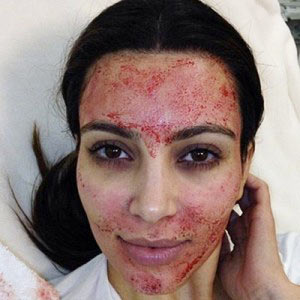In honor of International Women's Day, we are reposting this personal essay by Dr. Lara Devgan that was originally published in Intima, Columbia University's Journal of Narrative Medicine.
Intima | Field Notes | Spring 2014
By Lara Devgan, MD, MPH, FACS
As a plastic surgeon, I am interested in how people look. Whether I am piecing together a fractured face or reconstructing a cancer-scarred breast, I am focused on appearance, symmetry, contour, and lines. I am always thinking about how our bodies are the physical manifestations of who we are.
What I am never thinking about is how that sentiment applies to me.
An intern and I recently rounded on a patient who had been admitted to the hospital with a hand injury by the on-call reconstructive surgeon the night before. I examined her, asked her a few questions, and told her about the next steps in her care. She waited for me to finish, then turned to my intern, seven years my junior and utterly inexperienced in reconstructive surgery, and said “What I really want to know is what you think.”
As he stumbled tentatively through his answer, I took a close look at him. Six foot three, blond, and in scrubs—he really did look like he was in charge.
* * *
Doctors are taught the importance of making a good first impression starting from our first days of medical school. We wear professional attire, make eye contact, and introduce ourselves. We say “please.” We put patients first. Yet there are aspects of a first impression that are not so easily taught and learned. Underneath our stethoscopes and surgical gowns, we are trapped in our bodies.
Researchers at Harvard have demonstrated that our looks may matter more in assessments of our competence than we may like to admit. In one experiment, college students were asked to anonymously evaluate professors after watching six seconds of silent video footage of them teaching. Their conclusions about the professors’ likeability and competence were essentially the same as a control group of students who sat in those professors’ classes for a full semester.1
Indeed, we live in a frustratingly perception-oriented society: A political candidate who is “babyfaced” is not only deemed less competent than his sterner-looking opponent, but he is also more likely to lose the election.2,3 An employee who is short earns an average of $789 less per year for every inch below average he stands.4 And an obese job applicant is not only rated less ambitious and determined than her normal weight counterparts, but she is also less likely to be hired.5
Even amongst surgeons, perceptions of competence can be wrong. A study at Baylor looked at how medical students performed on their surgery clerkships. There was absolutely no correlation between the students’ performance on written and oral exams and the ratings senior doctors gave their medical knowledge.6 It’s impossible to know what factors caused this discrepancy, but it forces us to ask ourselves: if it’s not knowledge that’s being assessed, then what is?
* * *
I, like almost every female surgeon I know, can remember being called “Nurse” instead of “Doctor” on the wards. Despite our white coats and nametags, we have been mistaken for secretaries, scrub techs, translators, and social workers—all valuable members of the health care field, to be sure—but none reflecting our actual identities.
It calls to mind the “Warren Harding error,” a misattribution of ability named after the handsome, tall, masculine ex-President who has become known as a famously incompetent American leader.7 If looking presidential earns the spoils of winning, does looking doctorly earn a referral?
My world view—and the world view of many others, I suspect—is governed by somewhat rigid archetypes. It’s easy enough for me to imagine what a kindergarten teacher or a police officer looks like. Why is a doctor any different? Yet the more rigid the archetype of what a doctor looks like, the more likely we are to get our judgments wrong.
The patient with the hand injury did fine. She had a team of well-trained people taking care of her, and she was discharged home uneventfully. But her impulse to rely on the intern was a faulty one.
First impressions do not convey enough information to evaluate a surgeon’s competence. Demographics are changing. A talented surgeon may look nothing like a Norman Rockwell painting, and her education, training, and surgical skills may not come across in the first six seconds.
References
1. Ambady N, Rosenthal R. Half a Minute: Predicting Teacher Evaluations from Thin Slices of Nonverbal Behavior and Physical Attractiveness. Journal of Personality and Social Psychology 64 (1993): 431-41. http://ambadylab.stanford.edu/pubs/1993Ambady.pdf
2. Todorov A, Mandisodza AN, Goren A, Hall CC. Inferences of competence from faces predict election outcomes.Science. 2005 Jun 10;308(5728): 16236. https://psych.princeton.edu/psychology/research/todorov/pdf/Todorov_Science2005.pdf
3. Zebrowitz LA, Montepare JM. Psychology. Appearance DOES matter. Science. 2005 Jun 10;308(5728):1565- 6.http://www.brandeis.edu/departments/psych/zebrowitz/publications/PDFs/2000+/Zebrowitz_Montepare_2005.p df
4. Judge TA, Cable DM. The Effect of Physical Height on Workplace Success and Income: Preliminary Test of a Theoretical Model. Journal of Applied Psychology 89, no. 3 (June 2004): 428- 441. http://www.ncbi.nlm.nih.gov/pubmed/15161403
5. Larkin, J. C., Pines, H. A. (1979) No fat persons need apply: experimental studies of the overweight stereotype and hiring preference. Social Work Occupations 6: 312–327. http://wox.sagepub.com/content/6/3/312
6. Awad SS, Liscum KR, Aoki N, Awad SH, Berger DH. Does the subjective evaluation of medical student surgical knowledge correlate with written and oral exam performance? J Surg Res. 2002 May 1;104(1):36- 9.http://www.ncbi.nlm.nih.gov/pubmed/11971675
7. Malcom Gladwell, “Blink,” New York, NY: Little, Brown, and Company, 2005: 72-98.




















